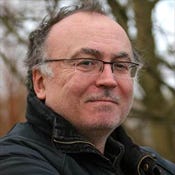U.K. government is investing millions into space-saving technologies to improve the future of mobile broadband.

We've had 1G, 2G, and 3G, and now 4G (LTE) mobile communications services are starting to appear. But there's a problem: we might not have enough capacity left over for 5G.
"Ever since 2G, the spectrum has started to get gradually fuller and fuller," explained Professor Rahim Tafazolli at the U.K.'s University of Surrey. "In some ways we are a victim of our own success. Up until now, we've been looking to design bigger and faster pipes with each leap forward, but now the problem is coping with the demands of all the content and how to fit it in. Going forward, mobile is going to be less about great new services and more about sustaining what we have now."
Tafazolli told InformationWeek U.K. the problem comes down to basic physics. When Europe's 2G GSM standard cellular started 20 years ago, it offered data transmission rates at least comparable to fixed wire. But since 3G, that data rate advantage has actually been slipping, and since users are consuming more and more data with smartphones and tablets, mobile broadband is now pushing the limits of what it was designed to do. By current trends, data traffic is expected to increase 1,000-fold by 2020, by which time there will be an estimated at least 50 billion Internet-capable devices chewing at bandwidth.
[ Could satellite be the solution for ubiquitous broadband? Read about it at Europe's Fastest Satellite Broadband Service Debuts. ]
"On best estimates, we might be able to get twice as much spectrum as we have now for 5G. The problem is that's going to have to service 15 or even 20 times the amount of data it does now," Tafazolli warned. Enter your new favorite term: spectrum crunch.
According to Tafazolli, the global telecommunications industry is valued at $2.1 trillion per annum and is already responsible for 6% of world GDP. The big challenge for the industry, he said, will be to make smarter use of what resources are available. "Unprecedented data traffic growth requires the urgent introduction of new 5G advanced technologies that maximize the use of the limited available radio spectrum and provide for 'greener' technologies and solutions."
Why do Tafazolli's pronouncements matter to the $2 trillion dollar telecom market? Tafazolli is a major stakeholder in an ambitious push by the British to shape the technical underpinnings of 5G and to become a major player in the next wave in telecommunications.
In fact, the U.K. government recently announced plans to invest $18 million/£11.6 million in research to map space-saving 5G technologies. Tafazolli's lab -- The Centre for Communication Systems Research, based at Surrey -- will soon feature a 5G testing environment that extends from the campus into the nearby historic town of Guildford in order to model different types of reception in both urban and non-urban spaces.
The Centre hopes to help establish the U.K. as a global leader and to reverse the fact that U.K. firms have fallen behind since 2G. Tafazolli's team has also been able to bring in $37 million/£24 million of seed money from international players like Samsung, Telefonica Europe, Huawei, Fujitsu Laboratories Europe, Rohde-Schwarz and AIRCOM International and, according to a Centre representative, "other high-profile players that don't want to be named at this stage." In total, these backers are putting $54 million/£35 million into Tafazolli's 5G project.
It's worth noting that the Centre for Communication Systems Research claims to be the largest academic research group in information and communication technologies in Europe, with over 150 researchers and the largest single chunk of EU ICT funding in this area. Tafazolli said, "The University's industry partners have identified this proposal as the single biggest opportunity for the U.K. to regain a world-leading position in the development of 5G technologies and for the development of vibrant businesses around the technologies."
Professor Sir Christopher Snowden, president and vice-chancellor of the university, said, "The new 5G Centre will enable the U.K. to lead this rapidly expanding segment of the global digital economy, [and it] paves the way for the further development of our long-term strategic partnerships with major global telecommunications organizations and significant inward investment into both Surrey and the U.K. "
To get there, Tafazolli first needs to crack a problem or two -- like figuring out ways to squeeze every bit of efficiency from the spectrum likely to be available for 5G services while staying as energy efficient as possible.
How long do we have to solve these challenges? Based on past trends, Tafazolli estimates the 5G standard should be internationally ratified by about 2020, with products on the market by about 2022.
Whether or not they will actually work is quite another question.
Rick Falkvinge, the founder of the Swedish Pirate Party and a campaigner for sensible information policy, will present the keynote address at Black Hat Europe 2013. Black Hat Europe will take place March 12-15 at The Grand Hotel Krasnapolsky in Amsterdam.
About the Author(s)
You May Also Like







